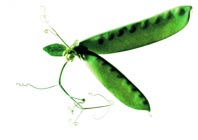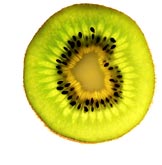Epsonow Magazine
Page 24 - Food for thought

If anyone's work can be considered "food for thought" then that of professional photographer Richard Weinstein would have to be well on the mark. His Tastebud Exhibition, which featured photographs printed on an Epson Stylus 2000P, resulted in high praise for his photographic prowess and the Stylus 2000P's true-to-life printing capabilities.
Since establishing his commercial photographic practice in Australia seven years ago, Mr Weinstein has made a name for himself as one of the country's leading photographers in the fields of still-life, jewellery and food. With the majority of his work being featured in advertising, packaging and product brochures, he is always looking for ways to better present his work to clients.
"Typically, most photographers send their work to photographic studios or offset printers to get proofs they can show their clients," explained Mr Weinstein. "Unfortunately, the degree of colour accuracy often isn't up to scratch.
"In printing jewellery photographs and proofs, for example, the subtle colours of gold and silver, and the brilliant range of colours in opals need to be incredibly precise. In many cases this is what sells the product."
Seeing the Difference
It was in late 2000 that he saw something that instigated an enormous change in his post-photo session production. An associate, also a photographer, was using an Epson Stylus 1270 to print proofs and photographs. According to Mr Weinstein, once he saw the potential of the Epson colour printing technologies, everything was set to establish a complete start-to-finish production cycle.
"Once I saw the incredibly fine grain and colour saturation, I started looking at the Epson Stylus 2000P," said Mr Weinstein. "After doing some research and talking to other people who were using Epson printers, I brought one into the studio and started putting it through its paces."
In testing the Stylus 2000P, he concentrated on five key points:
- Ease-of-use at both hardware and software levels;
- Consistency and accuracy of colour;
- Longevity of the printed output;
- Speed;
- Accuracy of dot placement.
"At every level, the Stylus 2000P really came through with flying colours. So much so, that I decided to base my entire Tastebud Exhibition on photographs printed only on Epson."
Showing the World

When the Tastebud Exhibition opened in April 2001, over 300 invited guests were given a rare opportunity to view the future of photographic printing. Each of the photographs on display was printed on either the Stylus 2000P or, where the print was larger than A3+, on an Epson StylusT PRO 9500 large format inkjet printer.
"While the main point of the exhibition was to display my work," said Mr Weinstein, "it was also to demonstrate how far advanced digital colour printing has come. Quite frankly, many of the visitors were astounded that everything was printed using digital colour printers."
He went on to explain that the effort put into preparing for the exhibition was made all the easier by the flexibility afforded to him by the Stylus 2000P's software. "We have our own drum-scanner, so once we've developed the film we can scan it then start using the Stylus 2000P's software to 'tweak' the output until it's precisely what we're after," he said. "This is another example of where the ability to do everything in-house is so much better than outsourcing to film labs and printers. We now have total control over the entire process. "If a print isn't exactly the way I want it, I only need to make some fine adjustments in the driver software, send the image to the printer, and four minutes later have a new version.
Compare this to waiting hours or even days with a bureau - then consider the cost savings on top of that!"
"One of the print issues that's very important to me is consistency," stated Mr Weinstein. "I can make a print one day, change the ink and still get a print that has excellent consistency with all the others. This simply isn't a given with other inks, so the use of genuine Epson media is critical."
The genuine Epson media message is further enforced by Mr Weinstein when discussing the life of his prints. "Customers can pay quite a bit of money for some of my photo prints and they want to know that, given the right conditions, the prints will last a long time before there's even a minor amount of discernable aging. Because I'm using only Epson inks and papers that have been designed to work together, I'm able to explain to customers about the 100 year lightfastness*.
"The Stylus 2000P has really demonstrated that it's capable of producing far superior prints than offset printers and traditional photographic printing systems. It's a product that is going to have an enormous impact in the areas of photography and design."
* More information on Lightfastness can be found at http://www.epson.com.au/news/technologynews/lightfastness.asp.
